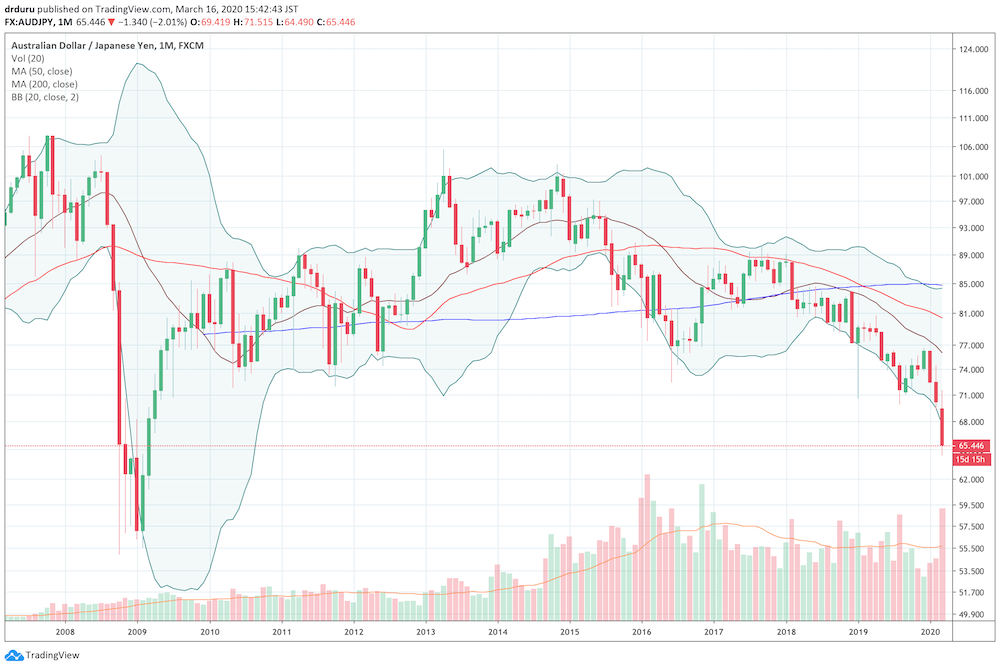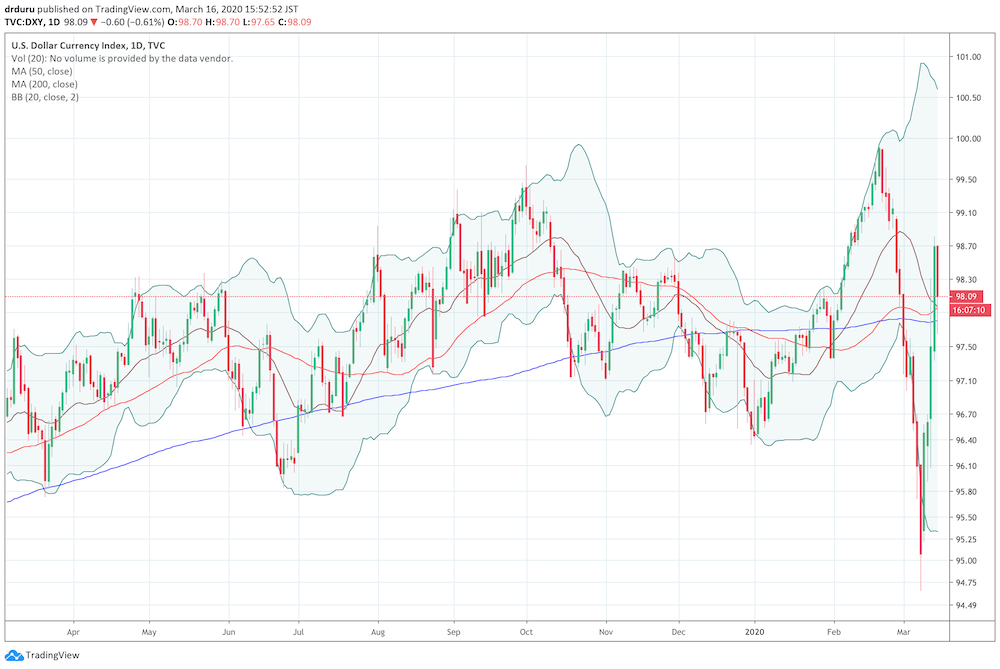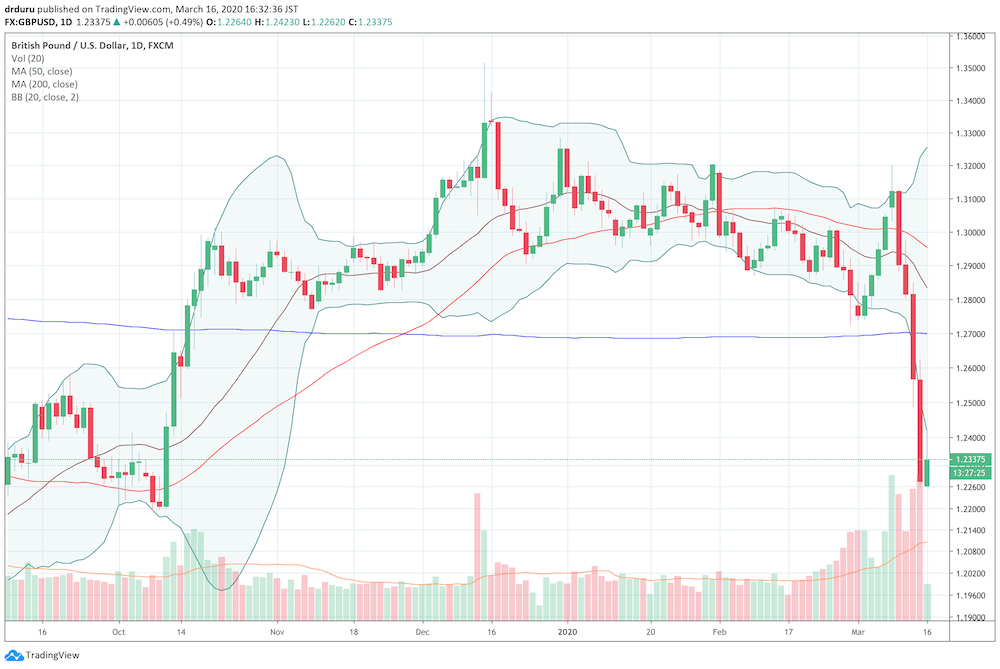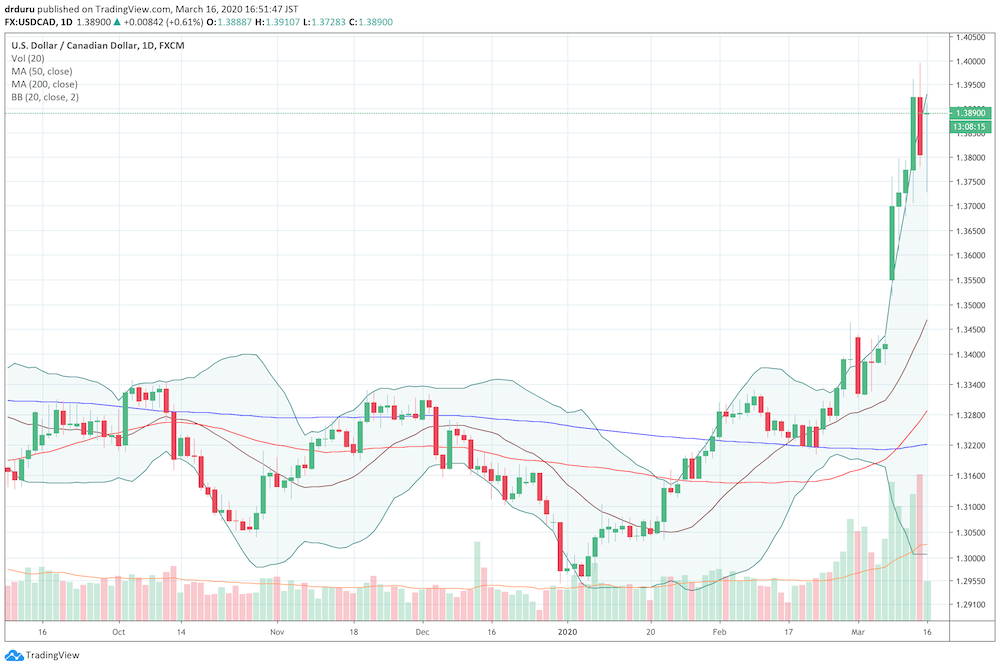In an earlier post on Sunday, I provided reasons to believe that the market was finally drawing a line in the sand for a sustainable bottom. With anticipation, I pronounced I would go on a shopping spreed down to S&P 500 (SPY) 2600. At the time of writing, it looks like I may have to wait for the S&P 500 to trade back ABOVE 2600.
The U.S. Federal Reserve
At the time of writing, stock market futures are limit down, meaning they traded down 5% before circuit breakers kicked in to stop trading. Futures will only trade above the 5% loss level. This plunge occurred in the wake of another emergency monetary action by the U.S. Federal Reserve (which pre-empted its previously scheduled meeting). Given the market’s hair trigger responses to Fed actions, traders seem to be interpreting emergency actions to mean that economic and financial conditions will get a lot worse before they get better. The Fed is easing monetary policies in order to prop up markets and to promote stability but getting more unease in response. At this point, perhaps only a vaccine and/or a strong treatment for coronavirus (covid-19) will promote stability in financial market!
Sunday’s emergency (and surprise) action came with a heavy dose of monetary stimulus. The Fed cut interest rates a full percentage point to a target range of 0 to 0.25%. The Fed also addressed growing stresses in the market for Treasurys and Mortgage Backed Securities (MBSs). From the Fed’s press release (Sunday, March 15, 2020):
“The Federal Reserve is prepared to use its full range of tools to support the flow of credit to households and businesses and thereby promote its maximum employment and price stability goals. To support the smooth functioning of markets for Treasury securities and agency mortgage-backed securities that are central to the flow of credit to households and businesses, over coming months the Committee will increase its holdings of Treasury securities by at least $500 billion and its holdings of agency mortgage-backed securities by at least $200 billion. The Committee will also reinvest all principal payments from the Federal Reserve’s holdings of agency debt and agency mortgage-backed securities in agency mortgage-backed securities. In addition, the Open Market Desk has recently expanded its overnight and term repurchase agreement operations. The Committee will continue to closely monitor market conditions and is prepared to adjust its plans as appropriate.”
Six of the planet’s major central banks also coordinated to enhance liquidity in funding markets using U.S. dollars. From the Federal Reserve:
“The swap lines are available standing facilities and serve as an important liquidity backstop to ease strains in global funding markets, thereby helping to mitigate the effects of such strains on the supply of credit to households and businesses, both domestically and abroad.”
In other words, the entire global financial system is under stress. No wonder stock markets plunged anew!
The Fed’s emergency meeting provided sobering perspective for trading conditions going forward. No trader should take lightly the potential downside risks that remain even as the stock market is already extremely oversold. On the flip side, this flood of liquidity is sure to give financial markets a turbo boost after the crisis begins to abate. It is too late to be bearish and a seller, but it is still very risky to be a bull and a buyer.
Currency Extremes: AUD/JPY and the U.S. Dollar
The recent turmoil and emergency monetary actions by central banks has brought a lot of extremes in currency markets. My key indicator of risk attitudes is the Australian dollar (FXA) versus the Japanese yen (FXY). AUD/JPY is now at levels last seen right before the historic stock market bottom in March, 2009. The monthly chart below also shows how AUD/JPY was sliding well ahead of the current market crash. Since the peak in 2017, and perhaps since the double-top between 2013 and 2015, AUD/JPY has been telling us that the market’s underpinnings were weakening.

Source: TradingView.com
The monthly chart makes me think a retest of the financial crisis lows is unavoidable. At the time of writing, I am surprised that AUD/JPY has yet to crack the intraday lows from last week given the futures limit down and the resulting prospects for a fresh (third!) market crash on Monday.
The U.S. dollar has failed its role as a “safe haven” during this turmoil because of larger currency forces at work. Thanks mainly to the euro (FXE), the U.S. dollar index (DXY) has experienced extreme moves during the market sell-off and crash. Starting February 21, 2020, the U.S. dollar index fell almost straight down. Presumably traders were rushing to close carry trades short the euro which caused artificial strength in the euro. For some time, the euro looked like a “safety” trade! I stuck to my bearish trading bias in the euro and used this opportunity to freshly fade EUR/USD. The pay-off came last week as the poor fundamentals of the euro resurfaced and major central banks scrambled to deliver more accommodative monetary policies. The dollar bottomed on March 9th as the rush into the euro finally came to a climactic end.

Source: TradingView.com
The European Central Bank (ECB): The euro
On Thursday, March 12th, the European Central Bank (ECB), delivered a package of emergency measures in its latest pronouncement on monetary policy. From the press release:
“Additional longer-term refinancing operations (LTROs) will be conducted, temporarily, to provide immediate liquidity support to the euro area financial system. Although the Governing Council does not see material signs of strains in money markets or liquidity shortages in the banking system, these operations will provide an effective backstop in case of need…
A temporary envelope of additional net asset purchases of €120 billion will be added until the end of the year, ensuring a strong contribution from the private sector purchase programmes…
The interest rate on the main refinancing operations and the interest rates on the marginal lending facility and the deposit facility will remain unchanged at 0.00%, 0.25% and -0.50% respectively. The Governing Council expects the key ECB interest rates to remain at their present or lower levels until it has seen the inflation outlook robustly converge to a level sufficiently close to, but below, 2% within its projection horizon, and such convergence has been consistently reflected in underlying inflation dynamics.”
The euro weakened sharply on this announcement of a barrage of this and other strong monetary measures to support the eurozone financial system. Note well that the ECB avoided cutting interest rates which are already negative.
Bank of England: The British Pound
Two days before the ECB, the Bank of England (BoE) delivered a large interest rate cut of 50 basis points to take its rate down to 0.25% in an emergency meeting. From the minutes of the special Monetary Policy Committee:
“Since the January MPC meeting, risk appetite in global financial markets had deteriorated substantially, reflecting an escalation of concerns about the global impact of Covid-19. The largest moves in advanced economies had taken place since 19 February, following the marked rise in the number of reported cases of the disease in Italy. Risky asset prices had fallen substantially, reflecting a combination of lower central growth expectations and an increase in perceived downside risks and risk aversion, partly offset subsequently by expectations of policy stimulus. Taken together, these asset price moves implied a material tightening in both UK and global financial conditions. Measures of option-implied volatility had picked up sharply, to historically elevated levels. There had been a marked decline in market liquidity and functioning, especially in fixed income markets…
Taken together, the sharp asset price movements since the MPC’s previous meeting implied a material tightening in financial conditions, and were consistent with a marked deterioration in risk appetite and the outlook for global and UK growth…
The Committee discussed the extent to which Bank Rate should be reduced. Given the likely scale of the economic shock from Covid-19 and the desire to help businesses and households bridge across it, a strong case could be made for a large reduction in interest rates at this meeting.
That move touched off a strong sell-off in the pound that may only now be abating. The pound’s weakness contributed to the sharp rebound in the U.S. dollar index.

Source: TradingView.com
Into this storm, the Bank of England will crown a new Governor. It will be a trial by fire!
Bank of Canada: The Canadian Dollar
The Bank of Canada (BoC) joined the fray on Friday with its own emergency meeting to issue a big monetary policy statement and a 50 basis point cut. From the press release:
“The Bank of Canada today lowered its target for the overnight rate by 50 basis points to ¾ percent, effective Monday, March 16, 2020. The Bank Rate is correspondingly 1 percent and the deposit rate is ½ percent. This unscheduled rate decision is a proactive measure taken in light of the negative shocks to Canada’s economy arising from the COVID-19 pandemic and the recent sharp drop in oil prices.
It is clear that the spread of the coronavirus is having serious consequences for Canadian families, and for Canada’s economy. In addition, lower prices for oil, even since our last scheduled rate decision on March 4, will weigh heavily on the economy, particularly in energy intensive regions.”
The Canadian dollar was already significantly weakening going into the BoC meeting thanks to the crash in oil prices. USD/CAD even put on a bit of a relief move on Friday by pulling back a bit. Still, USD/CAD now trades at a 4-year high.

Source: TradingView.com
Bank of Japan: The Japanese Yen
{Quick addendum after publication} The Bank of Japan quickly followed the Federal Reserve with its own additional monetary easing:
“Global financial and capital markets have been unstable, with growing uncertainties over the global economy due mainly to the impact of the outbreak of COVID-19. Under the circumstances, Japan’s economic activity has been weak recently… In addition, financial conditions have become less accommodative, as seen partly in corporate financing such as the financial positions of small and medium-sized firms…
The Bank will provide more ample yen funds for the time being by making use of active purchases of JGBs and other operations as well as …
introduce a new operation to provide loans against corporate debt…Increase in purchases of CP and corporate bonds… actively purchase ETFs and J-REITs for the time being so that their amounts outstanding will increase at annual paces with the upper limit of about 12 trillion yen and about 180 billion yen, respectively.
That is a lot of fresh Japanese yen that will flood the system! And yet, as usual, the financial markets will absorb the additional supply with eagerness and perhaps even relief.
The Upshot
Global central banks, and now fiscal authorities, are rushing to pump the global financial and economic system with a lot of support and stimulus. The synchronized monetary easing is getting to the scale of the financial crisis of 2008/2009. The parallel unease in markets is certainly at such heights.
Whenever the coronavirus crisis abates, the world be freshly awash in cheap money and liquidity. I fully expect global markets to rip higher on the other side of this crisis. The key trick for traders and investors is to stay optimistic enough to benefit from the big upside coming sometime in the future. Such a stunt will be very difficult as on-going market extremes in stocks and currencies will cause plenty of alarm and reason for angst. Such unease is natural in the belly of a crisis and rolling market crashes, but this drama also will look so overdone in hindsight when the recovery is well underway.
Be careful out there!
Full disclosure: long and short various pairs with the U.S. dollar, the euro, the Canadian dollar and the British pound; long SSO
